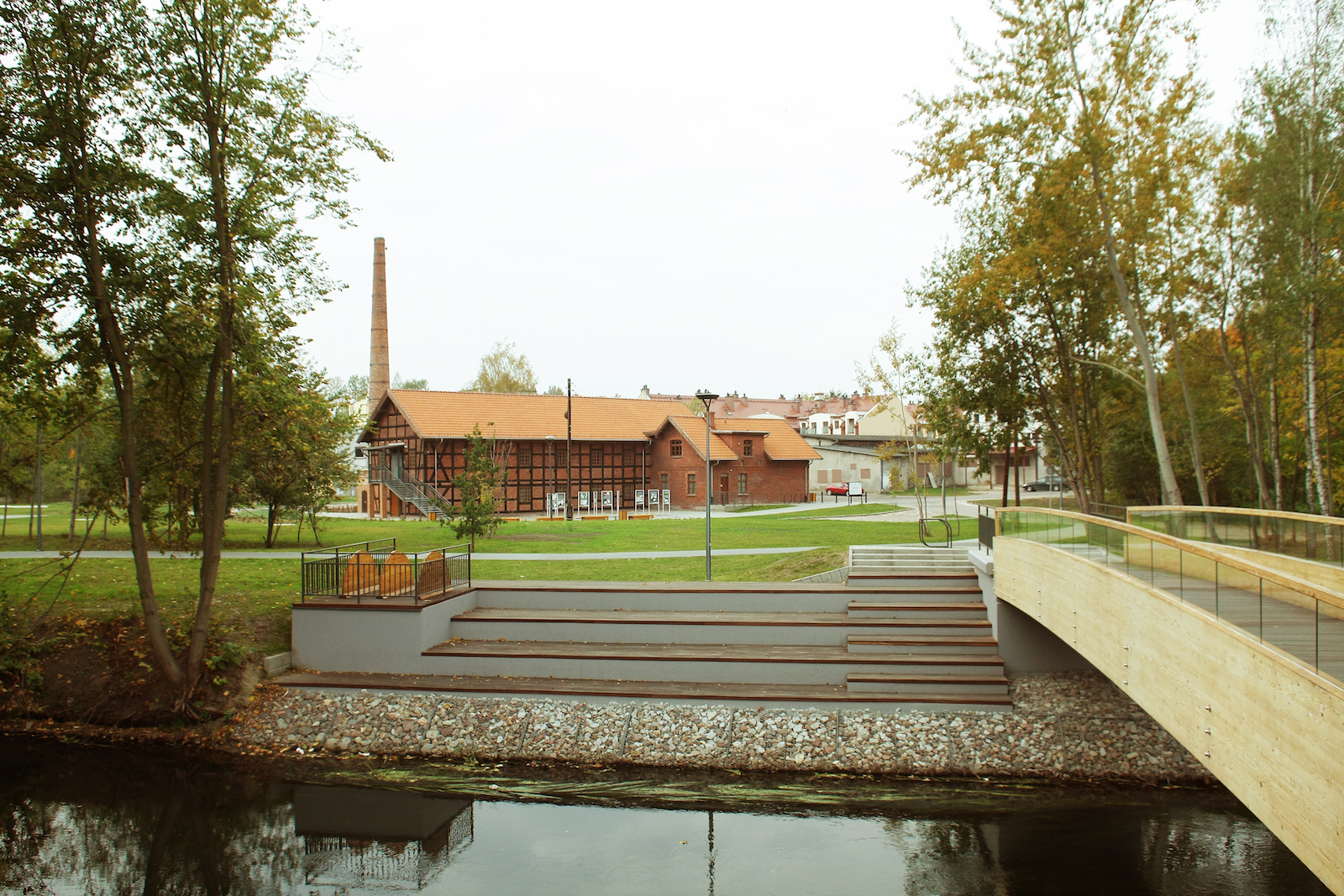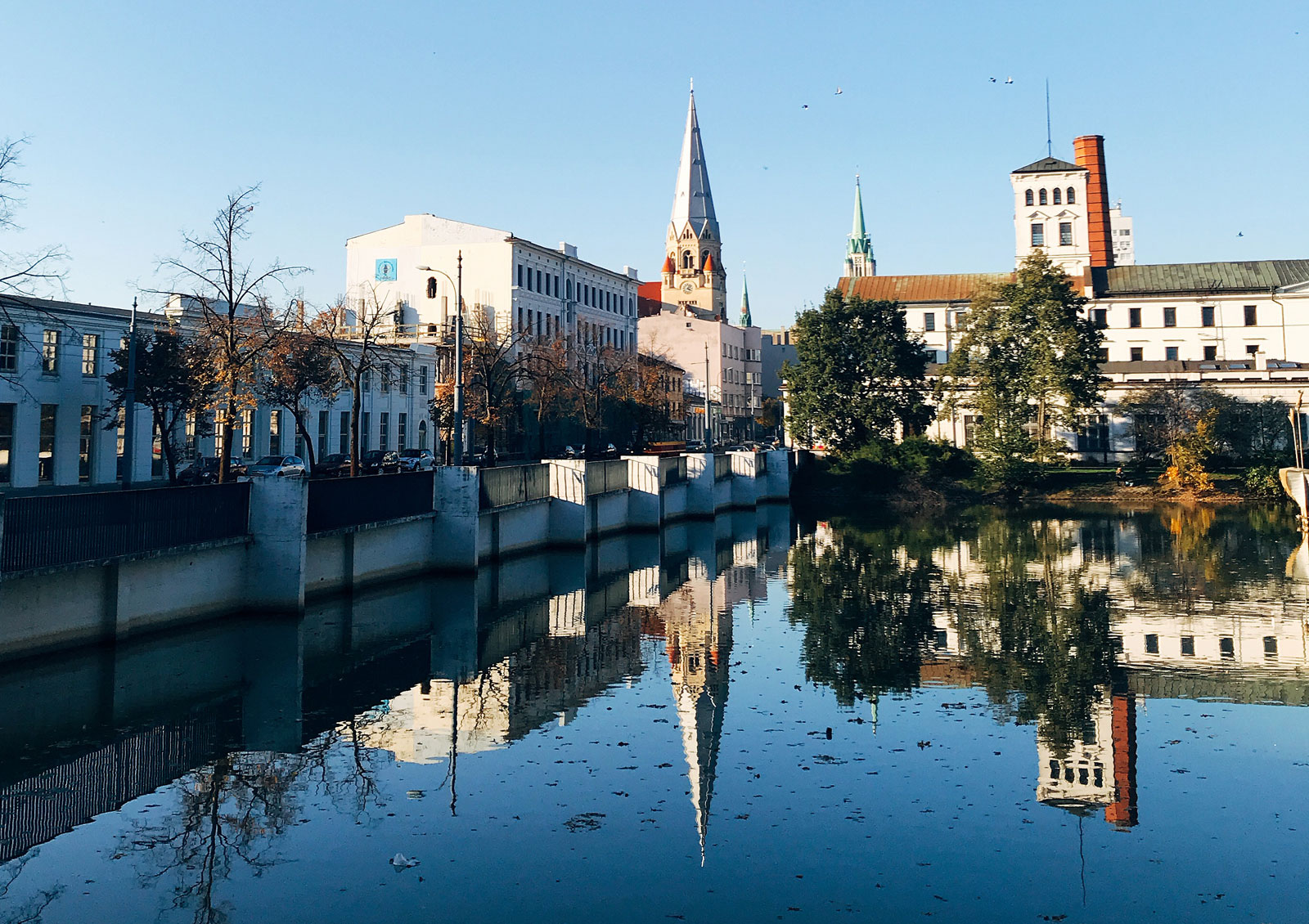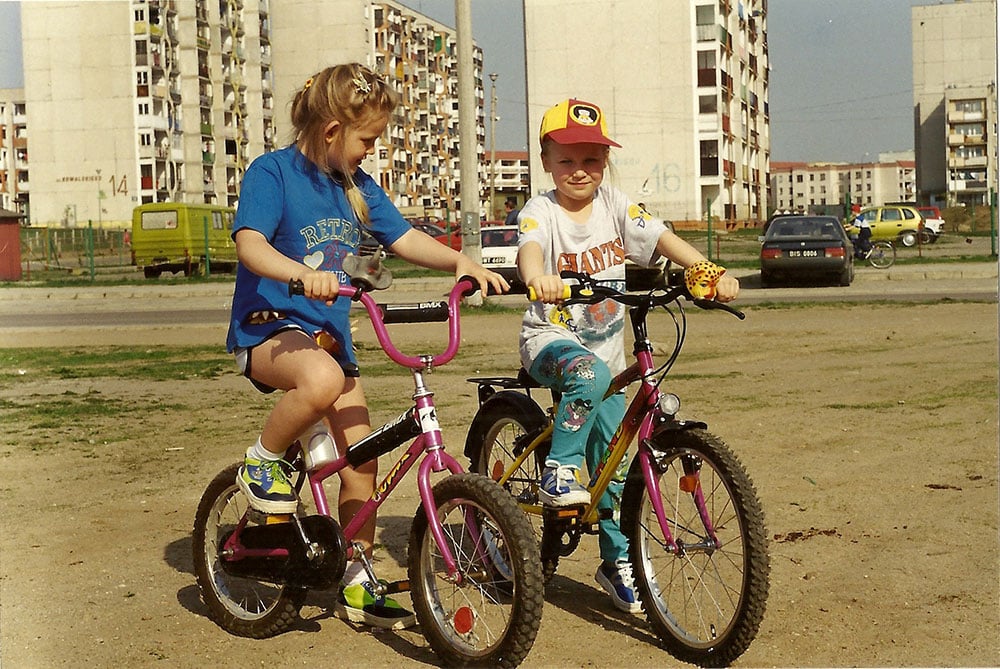Letter from Olsztyn: the curious, complex history of a German-Polish border town

Like many Polish towns, the city of Olsztyn has a rich and varied heritage. But for the country’s ruling PiS party, the region's story of intertwining cultures and countries creates paradoxes that some would rather be forgotten.
I first visited Olsztyn, the capital of the Warmian-Masurian region in northern Poland, while researching the life of my grandmother, Cäcilie. She was born here in 1923, when the town was called Allenstein, and the area itself was still a part of Germany. She came of age under Hitler’s regime, and, in February 1945, was deported to the Soviet Union as a forced labourer. I myself grew up in West Germany, where Cäcilie joined her family in 1949. Coming to Polish Olsztyn, a place I knew only from my grandmother’s stories, was to travel to a foreign land.
Here, leftover German flourishes and infrastructure are gently folded into the city’s everyday urban fabric
The city’s complex history is similar to many areas of northern and western Poland today. All have seen partitions, displacements and population exchanges, most recently when the borders of Poland were redrawn following the Second World War. Almost all of the German population either fled or was relocated to areas west of the Oder river, the new German-Polish border. The areas they left were then re-populated with newly-arriving refugees from the east: Poles displaced from lands annexed by the Soviet Union. In total, some 12 million Germans are estimated to have left the former German provinces of East Prussia, Pomerania and Silesia, while 5 million Poles moved to what the Communist Polish People’s Republic called “Recovered Territories”.
Today’s Olsztyn is spread across the hills east and south of the river Łyna, an architectural and cultural mix of three nations: Germany, the Communist Polish People’s Republic and the free Republic of Poland. The cobblestoned lanes and pastel buildings of the small old town, half-destroyed in 1945, have been restored. In summer, it’s popular with tourists: Germans that come to see family or to drink cheap beer, and the French and British holidaymakers who sail on the nearby lakes. Communist authorities erected a concrete amphitheatre next to the city’s 14th century castle back in 1978, and it still hosts a weekly programme of concerts and performances. North of the old town is the former Neustadt, the new city. Merchant residences and Wilheminian apartment buildings line the streets, alternating between run-down and lovingly restored. The massive neo-Gothic Church of the Sacred Heart towers over the neighbourhood. In summer, swifts hunting between its spire and the surrounding houses fill the evening with their sharp calls, and the atmosphere here is like any other former imperial city in Eastern Europe: Przemyśl, perhaps, or Lviv. It is also equally torn between neglect and renewal — though tilting towards the latter.
Oltzyn's Old Town. Image: Raki Man/Wikimedia Commons under a CC licence
Olsztyn is doing well. It is the centre of the Warmian-Masurian Special Economic Zone, where companies can benefit from increased public aid. One of the main employers is the Michelin car tire factory on the eastern outskirts, a former Communist factory. A new tram network with sleek, green and grey trains has operated since 2015, connecting the city centre with the suburb of Jaroty and the University of Warmia-Masuria. The connecting tissue of these areas, like in many other Eastern European cities, consists of large neighbourhoods of prefabricated high-rises, yet in Olsztyn, it never feels as if these are dominating the cityscape. Instead, the city only grows on the hills, with greenery that pleasantly interrupts the views from the city center to the suburbs and vice versa.
Here, just as in other former “recovered territories” in Pomerania and Silesia, leftover German flourishes and infrastructure are gently folded into the city’s everyday urban fabric. The TRAFO Center for Contemporary Art in Szczecin, the capital of the West Pomeranian region, is located in a massive former German power station from 1910; the Baltic Dramatic Theater Juliusz Słowacki in Koszalin, the former German Köslin, is located in a former Protestant church from 1906. The Jan Nowak-Jeziorański College of Eastern Europe located in Wojnowice, near Wrocław, is headquartered in the former 15th century Wohnwitz Castle.
For the young people here, the region’s many-layered past is nothing to be feared. But this can sometimes put cities such as Oltzyn at odds with the rest of Poland. Here, the implied pitfalls of German-Polish history that dominate the agenda of Poland’s governing Law and Justice party (PiS), like reparation payments, do not loom as large as many politicians would believe. Instead, they see a shared Polish-German heritage as something to be celebrated. Iga Skolimowska is a young actress and playwright from Olsztyn who splits her time between the city and Warsaw. “I feel quite familiar with [German] history,” she told me. “I’ve been exploring it step by step in school, or just by talking with my mum, who is very conscious of the region’s difficult history and cultural diversity. It was always somewhere in the back of my mind that I walk around a city that used to be multicultural and I’m sad that we don’t emphasise this enough. I think it’s highly enriching for a person to know the history and cultural background of the city they grew up in.”
Oltzyn New Town Hall. Image: Mariusz Cieszewski/Ministry of Foreign Affairs of the Republic of Poland
That does of course not mean that Olsztyn is a twee, near-ideal role model of Polish-German dialogue. Dr. Barbara Sapała, assistant professor at the German faculty of the local university, tells me that “we sometimes struggle to find students interested in studying German. At the moment, we have 55 students here in the faculty, out of almost 40,000 students across the university as a whole.” The majority of language students here, like anywhere else in Poland, study English.
But this acceptance can cause paradoxes and difficulties. The current Polish government seems uninterested in supporting an open engagement with the multicultural history of East Prussia, Pomerania and Silesia. Accepting the multiple identities and ethnicities of the region’s past would contrast starkly with their Polish nationalist narrative. Pursuing the narrative that these former German provinces were old Polish lands that were “reclaimed” meanwhile, would follow the same argument as Poland’s former socialist government, something unacceptable for a party with a staunch anti-communist stance.
The current Polish government seems uninterested in supporting an open engagement with the multicultural history of East Prussia, Pomerania and Silesia
Instead, the party focuses on conservative family politics and attempts to silently curtail support for institutions and associations that do not toe the party line. One example is the Borussia Foundation in Olsztyn, a group of writers and artists founded in 1990 and dedicated to researching East Prussian heritage. Since 2013, they have used the former Jewish Tahara house, the first building to be designed by celebrated local architect Erich Mendelsohn, as a centre for intercultural dialogue. Even before the Covid-19 pandemic put additional strain on their budget, the foundation could only operate thanks to funding from the European Union or from German-Polish institutions, chairwoman Kornelia Kurowska told me. Funding from the cultural ministry in Warsaw meanwhile, has been significantly reduced in the last years.
Pedestrians walk under Olsztyn's old city gate. Image: Nol Aders/Wikimedia Commons under a CC licence
Such a backdrop means that the upcoming Polish presidential elections will be particularly telling for cities such as Olsztyn. PiS has increased their homophobic rhethoric in the run-up to the vote, with current president Andrzej Duda making a campaign pledge to “defend children from LGBT ideology” — something he claims could be “even more destructive” than Communist ideology.
The current head of Oltzyn’s progressive city administration meanwhile, is independent city president Piotr Grzymowicz, who has faced three elections since coming into office. At a time when German cities are cancelling town twinning agreements with Polish municipalities that have adopted resolutions “against LGBTQ propaganda”, Olsztyn has fostered strong ties to their partner cities, welcoming a large delegation from Offenburg last year for the opening of an Offenburg Alley in the central park. In March 2019, Olsztyn also saw its first Marsz Równości, the local LGBTQ+ pride march, while the city welcomed decidedly pro-LGBTQ+ presidential candidate Rafał Trzaskowski.
It is a similar story in other cities in Poland’s former German regions: the over 100 local municipalities across Poland that have adopted resolutions “against LGBTQ propaganda” are almost exclusively located in the east of the country. Despite a narrative of an overriding and increasingly authoritarian government, many now believe that the 2020 elections could be far tighter than many have been led to believe.
A tram passes in the city of Olsztyn. Image: Freestocks/Unsplash under a CC licence
Humans are complicated beings; and so is the past, never monothematic or rarely in line with any government narrative. For many of the people living in the former German territories it is the direct, daily confrontation with the leftovers of previous inhabitants that makes it their home in the first place - and serves as a reminder that Poland’s heritage is much more layered than whatever the PiS might claim.
As Iga Skolimowska told me: “They [PiS] focus a lot on history, but I feel like there is not enough dialogue. I feel like the ruling party tends to think that a ‘pure Pole’ actually exits. It does not, it’s clear that because of our history we’re so mixed. And especially on former German lands. They try to fade out this aspect of the mixed, multicultural Poland that we have been for years. We are a diverse society today, and that is a fact.”


